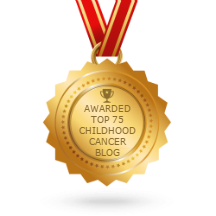Stem Cell Transplants/Bone Marrow Transplants

A stem cell or bone marrow transplant replenishes the body with healthy cells to help restore the bone marrow’s ability to produce healthy blood cells
Stem cell transplants – from bone marrow or other sources – can be an effective treatment for people with certain types of cancer such as leukaemia, lymphoma, multiple myeloma and neuroblastoma.
What Is a Stem Cell/Bone Marrow Transplant?
A bone marrow transplant, also known as a stem cell transplant, is a medical procedure whereby damaged or diseased bone marrow is replaced by highly specialised stem cells called haematopoietic stem cells, which are are blood-forming cells found both in the bloodstream and in the bone marrow.
Hematopoietic stem cells have the ability to create more blood-forming cells or to mature into one of the three different cell types that make up our blood:
- Red blood cells (cells that carry oxygen to all parts of the body);
- White blood cells (cells that help the body fight infections and diseases); and
- Platelets (cells that help blood clot and control bleeding)
These cells will develop into healthy bone marrow and will also attack and destroy any cancer cells that survived the initial treatment.
Types of Stem Cell Transplantation
There are two main types of stem cell transplantation:
Autologous Transplantation (AUTO)
Autologous Transplantation means that the patient is receiving his or her own stem cells. The stem cells are collected and then stored in a special freezer that can preserve them for decades.
The patient is then treated with powerful doses of chemotherapy and/or radiation therapy. Once the chemo or radiation is complete, the frozen stem cells are thawed and infused into the patient’s vein. The actual stem cell transplant is similar to a blood transfusion and takes one to five hours.
These cells will usually remain in the bloodstream for around 24 hours until theynaturally move into the bone marrow space, where they will then grow and multiply, beginning the healing process; the restored bone marrow should begin producing normal blood cells within several days, although it can sometimes take up to several weeks.
Allogeneic Transplantation (ALLO)
Allogeneic Transplantation is when a receives stem cells donated by someone else. This means that a donor-match needs to be found.
This is done via a procedure called HLA typing, which identifies the specific proteins, called human leukocyte antigens (HLA), which are found on the surface of white blood cells and throughout the body and make each person’s tissue unique.
A successful bone marrow transplant requires the donation of near-perfect HLA-matched bone marrow so that there is minimal chance of the recipient suffering from a complication called Graft-Versus-Host Disease (GVHD), in which the immune cells in the transplanted bone marrow recognise the recipient’s body as foreign and attack it
Most of the time the best chance of being a complete match is from the patient’s brother or sister; sometimes another family member can provide a good match, and in some cases the best match may be a complete stranger.
Once a donor has been identified, stem cell donation is coordinated so it takes place as close to the end of the patient’s initial chemotherapy and/or radiation therapy as possible. During the procedure, the patient receives the unfrozen donated stem cells through an IV that delivers them into his or her vein.
Comparing AUTO & ALLO Transplants
ALLO transplants have two advantages over AUTO transplants:
- In an ALLO transplant, the patient gets cancer-free stem cells that come from a healthy donor; AUTO transplants always contain a risk that the frozen stem cell product will contain some remaining cancer cells.
- With AUTO transplants, the cancer-killing effect ends when the chemotherapy and/or radiation therapy ends, as opposed to the ALLO transplant which recreates the immune system so that it can continue to attack remaining cancer cells after the chemotherapy and/or radiation therapy is done.
ALLO transplant patients, however, face risks of tissue rejection that someone who received an AUTO transplant does not.
Stem Cell Transplant Therapy Side-Effects
As with many other Cancer Therapies, there may be some complications or side-effects from stem cell transplant therapy.
Relieving side-effects, also known as palliative care, supportive care, or symptom management, is an important part of total cancer care and treatment, which is why you should discuss any symptoms your child is experiencing, new symptoms and changes in symptoms with their Oncology Team so that they can work out a regimen of palliative or supportive care for them.
Disclaimer:
Please note that the Little Fighters Cancer Trust shares information regarding various types of cancer treatments on this blog merely for informational use. LFCT does not endorse or promote any specific cancer treatments – we believe that the public should be informed but that the option is theirs to take as to what treatments are to be used.
Always consult your medical practitioner prior to taking any other medication, natural or otherwise.














